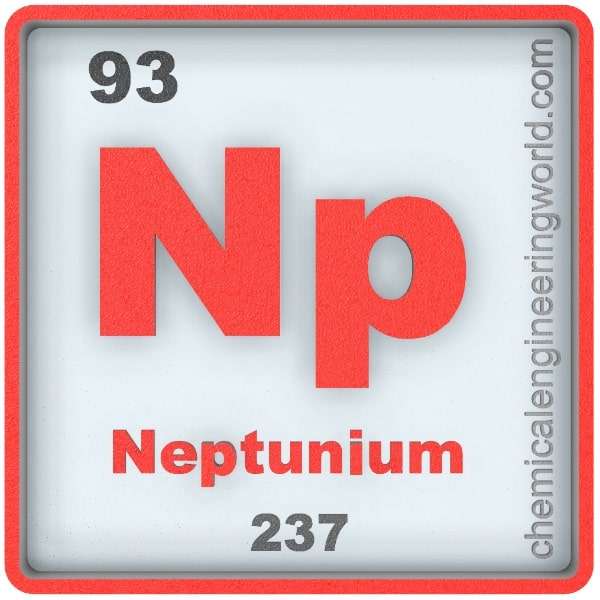Neptunium Element Properties and Information

Neptunium Element Properties and Information
Neptunium is 93rd element on the periodic table. Elements are arranged in the periodic table on the basis of the atomic number. Atomic number is the number of protons in the nucleus of the atom. Neptunium has an atomic number of 93. It is located in the Group ‘Actinides’ and Period 7 of the periodic table of elements. It is denoted by the symbol ‘Np’. The name is derived from the planet, Neptune.
Enrico Fermi claimed in 1934 that he produced element no. 93 and 94 by bombarding uranium with neutrons. His claim was challenged by Ida Tacke-Noddack and it was found that there were mistakes in analysis. Edwin McMillan and Philip Abelson are credited for the discovery of element no. 93, Neptunium. They bombarded uranium with slow-neutrons and noticed the presence of unusual beta rays. Neptunium is present in nature only in negligible amounts because all primordial neptunium isotopes have been decayed owing to the fact that their half-life is much shorter than the age of the Earth. Neptunium is produced only as intermediate product during decay of other isotopes.
Physical Properties
- Neptunium is a radioactive metal in the actinide series and is also the first transuranic element.
- The atomic mass of neptunium is (237).
- The melting point of neptunium is 640°C.
- The boiling point of neptunium is 3902°C.
- The density of neptunium is 20200 in S.I. units at 20°C.
- Neptunium is hard & ductile metal and has a silvery appearance.
- Neptunium is similar to uranium in physical workability.
- Pure neptunium is paramagnetic in nature.
Nearly 24 neptunium isotopes have been characterized so far.
Chemical Properties
- An oxide layer forms on neptunium when it is exposed to air.
- Neptunium compounds display an oxidation state of +3 to +7.
Neptunium is the heaviest actinide which can lose all its valence electrons in stable compounds.
Methods of Production
Neutron irradiation: Uranium-237, which is formed by neutron irradiation of uranium-235, decays to form neptunium-237. Americum-241, which is formed by neutron irradiation of uranium-238, decays to form neptunium-237.
Relevance in Chemical & Related Industries
Neptunium has no relevance in large-scale process industries.
Relevance in Other Industries
- Plutonium production: Neptunium-237 acts as a precursor to plutonium. It is irradiated with neutrons to form plutonium-238.
Physics: Neptunium-237 is used to detect high-energy neutrons.
Health Effects on Exposure
Potential effects: Bone cancer.
Effects on Surroundings
No negative environmental effects have been reported so far.
References:
https://en.wikipedia.org/wiki/Neptunium
































